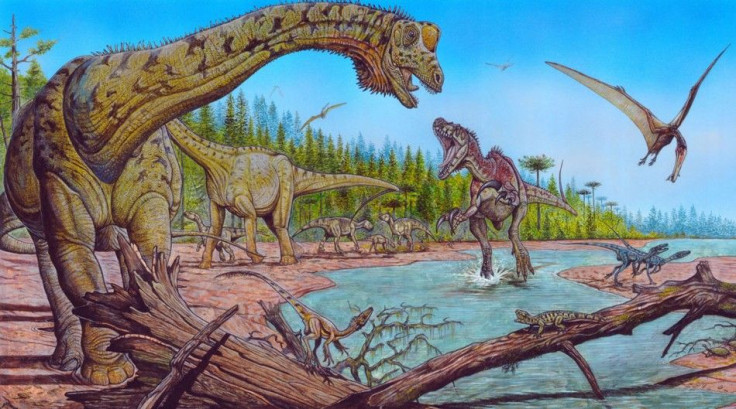Dinosaurs Were Warm-Blooded, New Evidence Shows Resemblance In Mammal Physiology

Even though they might resemble modern reptiles, new scientific evidence shows that dinosaurs were warm-blooded animals.
According to a new study published in PLoS ONE by researchers at the University of Adelaide in Australia, scientists argued that cold-blooded dinosaurs would not have had enough muscular power to pursue prey and dominate over other mammals as they did during the Mesozoic period, according to a statement.
"Dinosaurs dominated over mammals in terrestrial ecosystems throughout the Mesozoic. To do that they must have had more muscular power and greater endurance than a crocodile-like physiology would have allowed," professor Roger Seymour of the University's School of Earth and Environmental Sciences said in a statement.
That is, the larger the cold-blooded animal is, the less muscle power is generated. Using this principle, scientists took blood and muscle lactate measurements from crocodiles. Seymour showed that a 441-pound crocodile could only produce 14 percent of muscular power. As the body size increases, muscular power decreases.
"The results further show that cold-blooded crocodiles lack not only the absolute power for exercise but also the endurance that are evident in warm-blooded mammals," Seymour said. "So despite the impression that saltwater crocodiles are extremely powerful animals, a crocodile-like dinosaur could not compete well against a mammal-like dinosaur of the same size.”
Still, Seymour points out the issue whether dinosaurs were cold or warm-blooded is “hotly debated” among scientists. In a study published in Nature last year, Spanish scientists concluded that dinosaurs were warm-blooded based on an analysis of their lines of arrested growth.
LAGs, which appear in bones similar to age rings on tree trunks, were once used to prove that dinosaurs had to use their environments to regulate their internal temperatures. But the study showed the opposite.
The LAGS on dinosaur bones resembled ones belonging to modern animals that live in all the world’s climates.
"The bone growth patterns of dinosaurs establishes that they grew just like large mammals do and at comparable rates," Kevin Padian of the UC Berkeley Museum of Paleontology told the San Francisco Chronicle. "So their physiology could not have been like lizards and crocodiles, which grow much more slowly and whose bones look very different inside."
Padian adds that the notion of dinosaurs being cold-blooded is based on a commonly held assumption rather than scientific evidence.
"Actually, there never was any evidence that dinosaurs were ectotherms," he said. "It was just sort of like, well, dinosaurs are reptiles, and living reptiles are cold-blooded, so dinosaurs were cold-blooded too."
© Copyright IBTimes 2024. All rights reserved.












